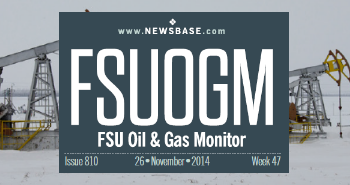bneGREEN: Russia drafts hydrogen development plan

Russia plans to emerge as an exporter of hydrogen within the space of a few years and supply as much as 12mn tonnes per year (tpy) of the fuel by 2035, under a draft development plan approved in August.
The country is eager to carve out a role for itself in the energy transition taking shape in Europe and Asia, and sees an opportunity for converting some of its vast natural gas reserves into low-carbon hydrogen. Deputy Prime Minister Alexander Novak estimated in June that Russia could occupy a 20% share of the global hydrogen market.
Its development plan gives wildly contrasting projections for exactly how much hydrogen Russia will be shipping overseas, however. In a low-case scenario, the country could be exporting only 2mn tpy of hydrogen by 2035, rising to 15mn tpy in 2050. In contrast, the high-end scenario puts supply at 12mn tpy by 2035 and 50mn tpy by 2050.
In July, the government formed a working group of companies, research institutes and federal agencies to develop hydrogen technologies, production and trade. Among its members are state nuclear firm Rosatom, oil and gas producers Rosneft, Gazprom, Gazprom Neft and Novatek, petrochemicals firm Sibur, vehicle manufacturer Kamaz, investment group Sistema and state tech groups Rostec and Rusnano. It is chaired by Novak, Russia’s former energy minister who now oversees energy policy from the prime minister’s office.
The development plan envisages three stages for the scaling-up of Russian hydrogen. The first stage, spanning from 2021 to 2024, will aim to establish pilot clusters for hydrogen production and implement pilot projects to export up to 200,000 tpy by 2024. The clusters are expected to be established in north-west and south-west Russia, the Far East and the Arctic.
The second stage will run from 2025 until 2035, and will see the first commercial hydrogen projects come online. It will also focus on the widespread adoption of hydrogen technologies in various sectors of the domestic economy, from petrochemistry to housing and utilities. The third stage, lasting until 2050, could see a significant upscaling on Russia’s hydrogen strategy, assuming a significant expansion in demand for the fuel globally, as some forecasters predict.
Russia envisages producing a wide variety of different hydrogen types, although its primary focus will be blue and turquoise hydrogen, derived from natural gas.
Gazprom is advocating for turquoise hydrogen, produced from a technique known as methane pyrolysis. The little-used process also produces solid carbon as a by-product, which has useful applications in industry and does not have to be placed in storage like CO2. Other oil and gas companies are looking at blue hydrogen, also produced from natural gas via reforming, but requiring carbon capture and storage (CCS) to make it clean.
Russia also has green hydrogen ambitions, although the country’s wind and solar sectors are still at a nascent stage of development and would have to be upscaled. And even then, it would make more sense for renewables to be used to decarbonise the Russian power grid rather than for producing hydrogen.
Yellow hydrogen is another option. Like green hydrogen, it is produced from water via electrolysis. But unlike the case with green, the electrolysers used to produce yellow are powered by nuclear energy.




Follow us online